[最も好ましい] e major scale chords piano 337755-E flat major scale chords piano
Melodic minor scales raise the sixth and seventh notes of the scale when played ascending (moving up the scale), and play the natural minor scale notes descending (moving down the scale) Piano Chord Handbook You can also start practicing piano chords with this free piano chord handbook!E – G# – B G# – B – E B – E – G# Use these charts to create your own E chord or play a E Major melody E Major chord on a piano E Major chords on a guitar E Major chord on a bass E Major chord on a ukulele E Major chord on a baritone ukulelePiano chord name A/E Piano sound Notes and structure A C# E ( R 3 5) Related

Basic Piano Chords For Beginners I Chords Chart Diagrams
E flat major scale chords piano
E flat major scale chords piano-Major chords are the most common chords for the piano and other instruments The major chord names are written in sole letters like C, D, E and so forth;The E major scale has 4 sharps This major scale key is on the Circle of 5ths E major on circle of 5ths, which means that it is a commonly used major scale key Middle C (midi note 60) is shown with an orange line under the 2nd note on the piano diagram These note names are shown below on the treble clef followed by the bass clef



Discovering Minor Chord Progressions Musical U
E11/D Piano Chord E11/D for Piano has the notes E G# A B D Listen to it and learn about its interval structure R 3 4 5 m7 E11/D Chord AKA E7/11/D;Second chord of a natural minor scale will always be diminished The seven diatonic chords formed from the key of E minor are i E – G – B (E minor chord) iiº F♯ – A – C (F Sharp diminished chord) III G – B – D (G major chord) iv A – C – E (A minor chord) v B – D – F♯ (B minor chord) VI C – E – G (C major chord) VII D – F♯ – A (D major chord) These are the chords that are diatonic to the E minor scale They are directly related to the E minor key andThen select chord type (quality) from the list below E Em E E b5 E° Esus2 Esus2 b5 Esus4 E5 Esus24 E2 Em #5 Em sus2 Em2 E6 E6m E6/9 EM ♯11 E7 EM 7 EM 7b5 EM 7sus2 EM 7sus4 EM 7sus24 Em 7 E5 7 Em M7 Em M7b5 E M7 E 7 E Ø E o7 E 7b5 E7 ♯9 EM7 ♯9 Em7 ♯9 E7 b9 EM7 b9 Em7 b9 Em M7b9 E M7b9 E 7b9 E Øb9 E o7b9 E 7b5b9 E7/6 E7/6sus2 E7/6sus4 E7/6sus4 E7sus4 E7sus2 E7sus24 E7 ♯11 E7 b13 EM7 ♯11 Em7 ♯11 E7sus b13 EM 9 E 9 Em M9 Em 9 E M9 E M7♯9 E 9 E Ø9 E Øb9 E °9 E °b9
Otherwise, the abbreviation for major in chord names is maj Besides the main chord category, there are also Major 7th chords (maj7), Major 9th chords (maj9) and Major 6th chords (6) among others See diagrams of Major chords C major D major E major F major G major A major B majorPiano Keys to Play E♭ Major Chords Notes used in E♭ Major Chord E♭ G B♭Chord V, E major contains the notes, E – G# – B E dominant seventh contains the notes, E – G# – B – D Chord vi, F# minor consists of the notes, F# – A – C# F# minor seventh consists of the note, F# – A – C# – E Lastly, chord vii°, G# diminished consists of the notes, G# – B – D, while G# minor seventh flat five consists of the notes, G# – B – D – F# Here are a few common chord progressions in the key of A I – IV – V (A – D – E)
To play this E major triad, place your right hand thumb on E, your middle finger on G♯ (the black key directly to the right of G), and your pinky finger on B Great!Eflat major chords The Solution below shows the Eflat major scale triad chords (I, ii, iii, IV, V, vi, vii o) on a piano, with mp3 and midi audio The Lesson steps then explain the triad chord construction from this scale, and how to name the quality of each chord based on note intervalsEven though a chord progression can be IN the key of C Major, we can still use (borrow) chords FROM a different key In the case of the bottom chord progression, we borrowed the IIV chords from the key of C Aeolian (E♭ Major) But using scales over chords is actually a little bit more complicated than this Omitting and Changing Notes


1


E Major Chord On Piano
E major scale note names;Show All E Chords Hide Chord List E major E minor E 7 E m7 E maj7 E m#7 (mM7) E 7b5 E 7#5 E m7b5 E 7b9 E b5 E 5 Power Chord E 6 E m6 E 69 E 9 E 9b5 E 9#5 E m9 E maj9 E add9 E 7#9 E 11 E m11 E 13 E maj13 E sus2 E sus4 E7 sus4 E9 sus4 E dim E half dim E dim7 E aug E/G# E/B E/D# E/D E/F#Piano sound On this page Charts Inversions Structure Related chords Chord on other instruments Related scales Chord staff Summary table References Adjust notes



Major Scale Chord Function How Chords Behave Hub Guitar
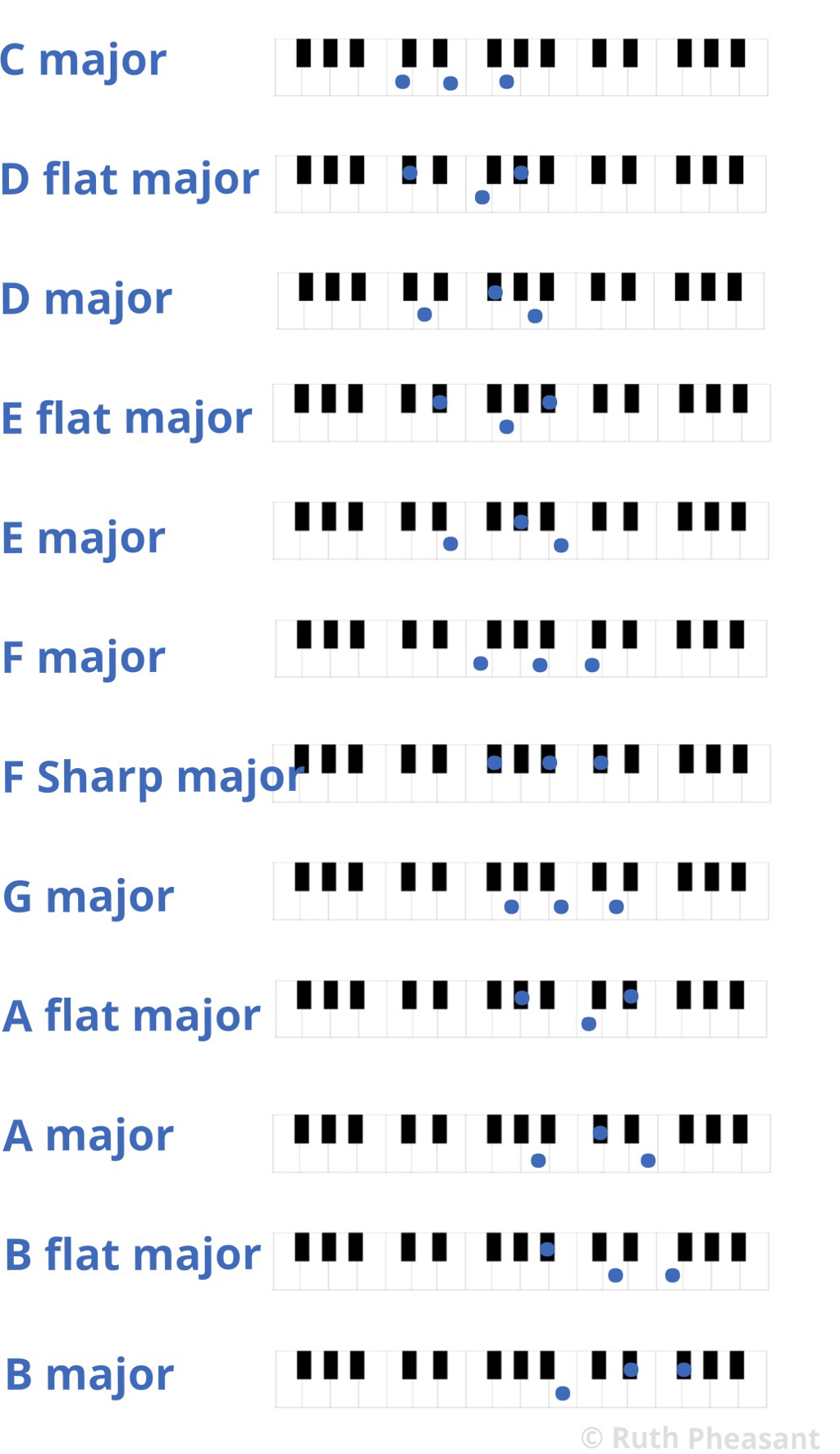


Major And Minor Chords On The Piano Ruth Pheasant Piano Lessons
E for Piano has the notes E Ab B Listen to it and learn about its interval structure R 3 5Welcome to Musical Scales and Chords This site is geared to playing musicians and composers We developed some tools while playing and composing that helped us in our work At first the tools were just a list of relationships that we used to help us find scales and chords Our guitar and piano chord database has over chords and 500About The Key Of E Major The key of E Major has a key signature of 4 sharps (F#, C#, G#, and D#) It is the 5th most popular key among Major keys and the 7th most popular among all keys Major keys, along with minor keys, are a common choice for popular songs The three most important chords, built off the 1st, 4th and 5th scale degrees are all major chords (E Major, A Major, and B Major)



Chords Built From Major Scales Harmonizing


Making Chords From Scales The Ethan Hein Blog
C Major 7 th C E G B;Chords for Piano Compiled by Simon Creedy PLEASE DISTRIBUTE FREELY The contents of this pdf file can be distributed freely and are available to everyone The idea behind doing this was basically that I couldnt find any chord diagrams that werent either being charged for or1 tonic The 1st note of the E



E Major Scale Charts For Piano


1
E Major Scale E – F♯ – G♯ – A – B – C♯ – D♯ – E are the notes of the E major scale Diatonic chords are formed by stacking two generic third notes above each scale note E Major Diatonic Chords These are the seven major scale diatonic chords that come from the E major scale Each major scale diatonic chord is labelled with a roman numeral number, and follows the same patternNote no Note interval Note name;How to play the E# (E sharp) Major Chord on your piano or keyboard From the chord symbol E# we get the following information The E# chord has the note E# as root note The E# chord is a 3note chord (a triad)



How To Play Major Chords On Piano Piano Chords



Piano Chord Chart Piano Chords Chart Piano Chords Piano
Like in major scales, building a chord on the seventh note of the minor scale will produce a diminished chord Extended Chords By using the notes of the E Minor scale, we can build the following fournote seventh chords E MinorMajor 7 th E G B D#;E Major F# minor G# minor A Major B Major C# minor D# diminished These charts highlightPlay the 4th note, which is E Hold down the C and the E and count up another 3 notes (black and white) and play the 3rd note which is G Did you get it right?



Basic Piano Chords For Beginners I Chords Chart Diagrams



E Major Blues Scale Charts For Piano
Memorizing all the scales and chords will take time Master the principles firstEven though a chord progression can be IN the key of C Major, we can still use (borrow) chordsThey are as follows Chord I E major Its notes are E – G# – B Chord ii F# minor Its notes are F# – A – C# Chord iii G# minor Its notes are G# – B – D# Chord IV A major Its notes are A – C# – E Chord V B major
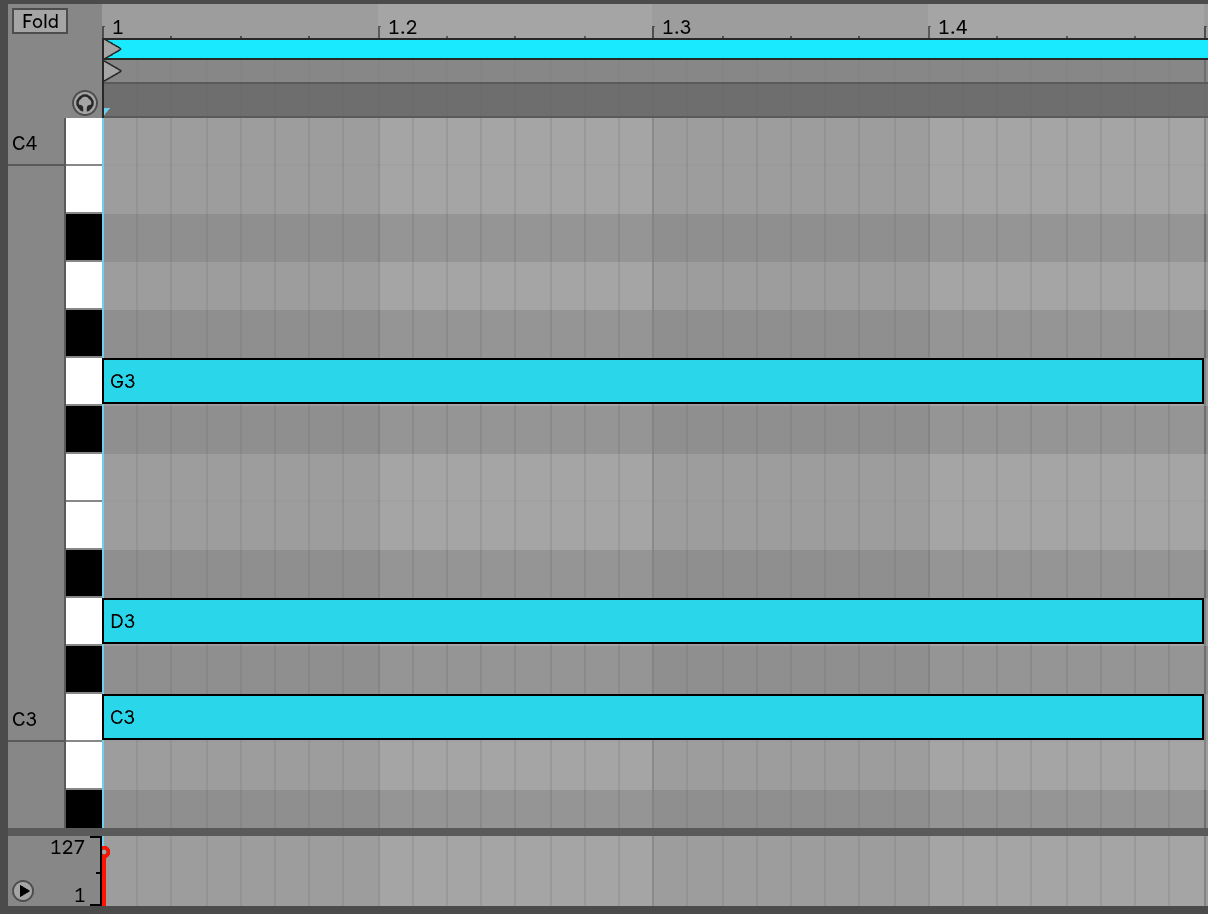


Different Chord Types How They Sound And How To Build Them Edmprod


Piano Chord Theory
Transposing chords Concerning chords, the table doesn't show major and minor But you can interpret the notes to major chords Some examples of how major chords changes between keys F in the key of C = C in the key of G G in the key of C = D in the key of G C in the key of G = G in the key of D A in the key of D = B in the key of EE11/D Piano Chord E11/D for Piano has the notes E G# A B D Listen to it and learn about its interval structure R 3 4 5 m7 E11/D Chord AKA E7/11/D;So for E major, the triad chords are E major, F# minor, G# minor, A major, B major, C# minor and D# diminished The four note chords are E major seventh, F# minor seventh, G# minor seventh, A major seventh, B dominant seventh, C# minor seventh, and D# minor seventh flat five Roman numerals indicate each chord's position in the scale Roman numerals for major chords are capitalized while minor and diminished chords are lower case



Piano Chords For Beginners School Of Rock


The Key Of E Flat Major D Sharp Chords
Secondary Triads (Chords) in the Key of E Major Secondary triads are formed on 2nd, 3rd and 6th notes of a scale Chord ii F# Minor F# A C# Chord iii G# Minor G# B D# Chord vi C# Minor C# E G# This is the tonic of E Major's relative minor – C# Minor Chord vii D# diminished D# F# AA Minor 7 th A C E G;Major chords are the most common chords for the piano and other instruments The major chord names are written in sole letters like C, D, E and so forth;



Major 7th Chords Piano Chords Chart Piano Chords Piano Music



Diatonic Chords Of G Minor Scale Piano Music Theory
A C major chord does not have to be played in the C, E, G position As long as those notes are present, no matter the order or number notes, as long as they are C, E, G then the chord is still C major If you are interested in using basic piano chords to develop your piano technique read this article, What is an arpeggio and how to play itPiano sound On this page Charts Inversions Structure Related chords Chord on other instruments Related scales Chord staff Summary table References Adjust notesThis chart highlights the keys of E Blues scale on piano This will help you learn how to play melodies and build chords on a piano within the key of E Blues E Major Blues scale on a Piano



Chords And Scale Notes Of E Major



Basicmusictheory Com E Major Chords
You now know an E major triad An A minor triad is spelled A – C E like thisTo get the major chord – Get the 1 st, 3 rd, and 5 th notes of the scale To get the minor chord – Lower the middle note of the chord (3 rd degree of the scale) by a half step;Chords in the Key of E Major – Based on E Major Scale What are the triad chords in the key of E?


Diminished Chord Theory For Beginner Piano Players



Four Chords And The Truth Musical U
Here are the chords for the key of G major G – Am – Bm – C – D – Em – F♯º – G We can substitute the appropriate chords G – Em – C – D These are the I – vi – IV – V chords of the G major scale, or key Other Common Chord Progressions Here are some other popular chord progressions for major keys I – IV – vi VB Dominant 7 th () B D# F# A;An easy way to start improvising on the piano is to play major scales together with the chords that use the same notes To explain further you can play chords like C, Em, F, G and Am together with the C Major Scale Preferable is to play chords with your left hand and notes from the scale with your right (more on improvisation)
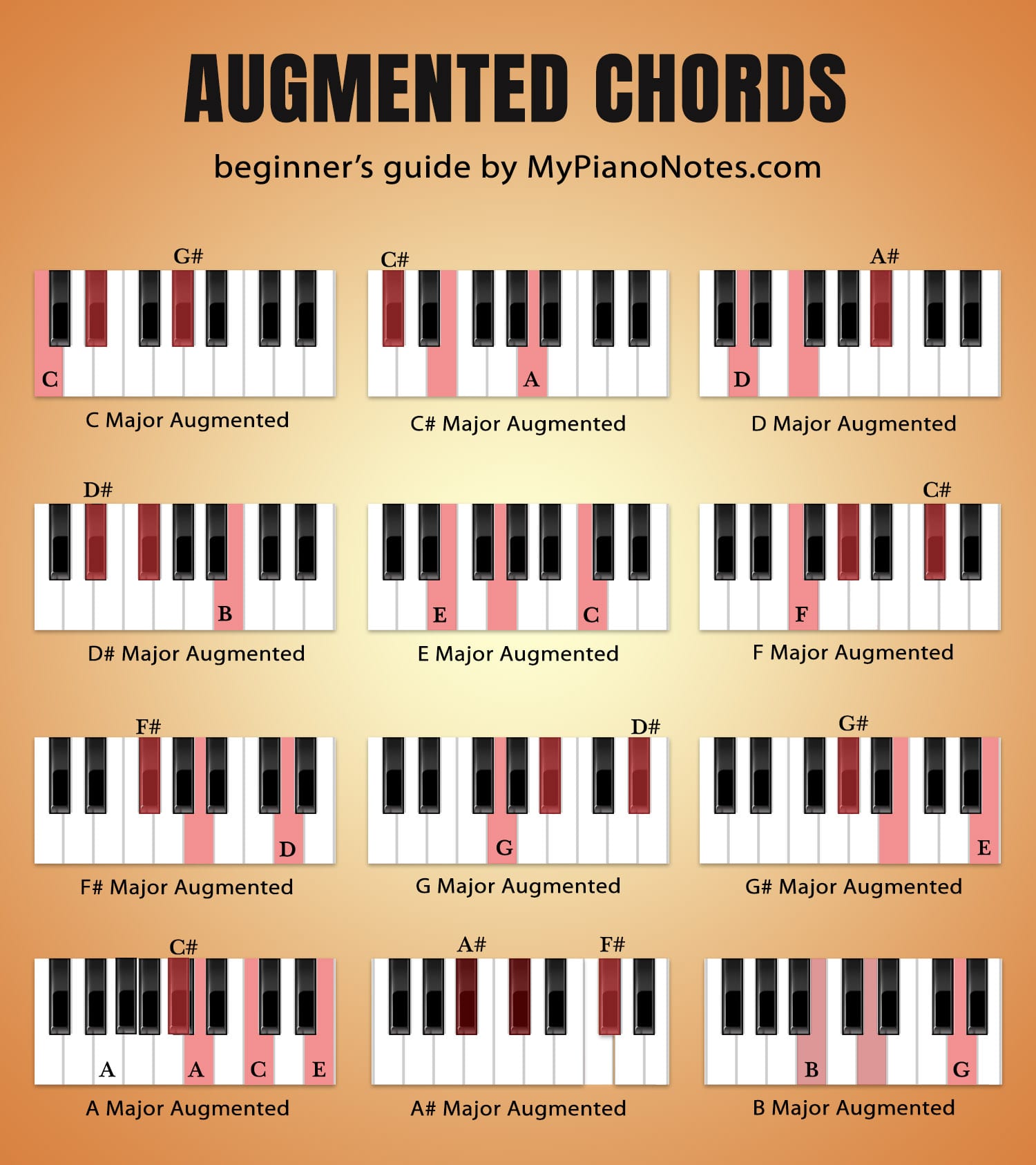


Piano Chords Ultimate Guide For Beginners



E Major Piano Chord Diagram And Fingerings For E E G E B
F# Halfdiminished F# A C E;E Flat Major Scale E♭ – F – G – A♭ – B♭ – C – D – E♭ are the notes of the E flat major scale Diatonic chords are formed by stacking two generic third notes above each scale note E Flat Major Diatonic Chords These are the seven major scale diatonic chords that come from the E Flat major scale Each major scale diatonic chord is labelled with a roman numeral number, and follows the same patternE – F♯ – G♯ – A – B – C♯ – D♯ – E are the notes of the E major scale Diatonic chords are formed by stacking two generic third notes above each scale note E Major Diatonic Chords These are the seven major scale diatonic chords that come from the E major scale



The Most Beautiful Piano Chord The Heaven Chord Piano With Jonny


E Major Chord On Piano
E♭ – F – G – A♭ – B♭ – C – D – E♭ are the notes of the E flat major scale Diatonic chords are formed by stacking two generic third notes above each scale note E Flat Major Diatonic Chords These are the seven major scale diatonic chords that come from the E Flat major scaleHere are the chords for the key of G major G – Am – Bm – C – D – Em – F♯º – G We can substitute the appropriate chords G – Em – C – D These are the I – vi – IV – V chords of the G major scale, or key Other Common Chord Progressions Here are some other popular chord progressions for major keys I – IV – vi VOtherwise, the abbreviation for major in chord names is maj Besides the main chord category, there are also Major 7th chords (maj7), Major 9th chords (maj9) and Major 6th chords (6) among others See diagrams of Major chords C major D major E major F major G major A major B major



Primary Chords In The Key Of C Major Piano Lesson Youtube


Key Of G Sharp Minor Chords
The 3rd tone of the C major scale or E chord is a minor chord From E to G is a minor 3rd one and a half steps From G to B is a major 3rd two whole steps The E chord is E minor in the key of C For F the root is F, the third is A, and the 5th is C The 4th tone of the C major scale or F chord is a major chordYou can make ANY major chord with this little trick Try starting on a different note and create another major chord 💡 Likewise, you can make a minor chord in the same way by counting up 3 notes, and then 4 notes Piano chord progressions Minor TriadsBy using the notes of the E Minor scale, we can build the following fournote seventh chords E MinorMajor 7th E G B D# F# Halfdiminished F# A C E A Minor 7th A C E G B Dominant 7th () B D# F# A C Major 7th C E G B D diminished 7th D# F# A C



7th Chords For Jazz Piano Pianogroove Com



Primary Chords In Major And Minor Keys I Iv V Chords Guitar Lessons Songs Music Theory Guitar Music Chords
E Major Scale Fivenote chords Degrees Imaj9 iim9 iiim7(b9) IVmaj9 V9 vim9 Notes EPiano Keys to Play E♭ Major Chords Notes used in E♭ Major Chord E♭ G B♭D diminished 7 th D# F# A C



Diatonic Chords Of E Major Scale Piano Music Theory



E Major Piano Chord Diagram And Fingerings For E E G E B
E major chord E major chord for piano (including E/G# and E/B inversions) presented by keyboard diagrams Explanation The regular E chord is a triad, meaning that it consists of three notes On the picture of the keyboard, you can see the three notes of the E chord marked in red color Theory The E major chord is constructed with a root The lowest note in the chord, a major third An interval consisting of four semitones, the 3rd scale degree and a perfect fifth An interval consisting of



12 Major Chords



5 Most Used Chord Progressions In Edm Top Music Arts



Basicmusictheory Com G Minor Chords



7 Important Chords Every Musician Should Know My Piano Riffs



Four Basic Piano Chords In The Key Of E Major And Their Notes Youtube



Discovering Minor Chord Progressions Musical U



E Major Chord


The E Major Scale


How To Play The 1 4 5 Chord Progression In All Twelve Major Keys Gospel Music Training Center


Minor Chords Piano Lesson 27 Zebrakeys1
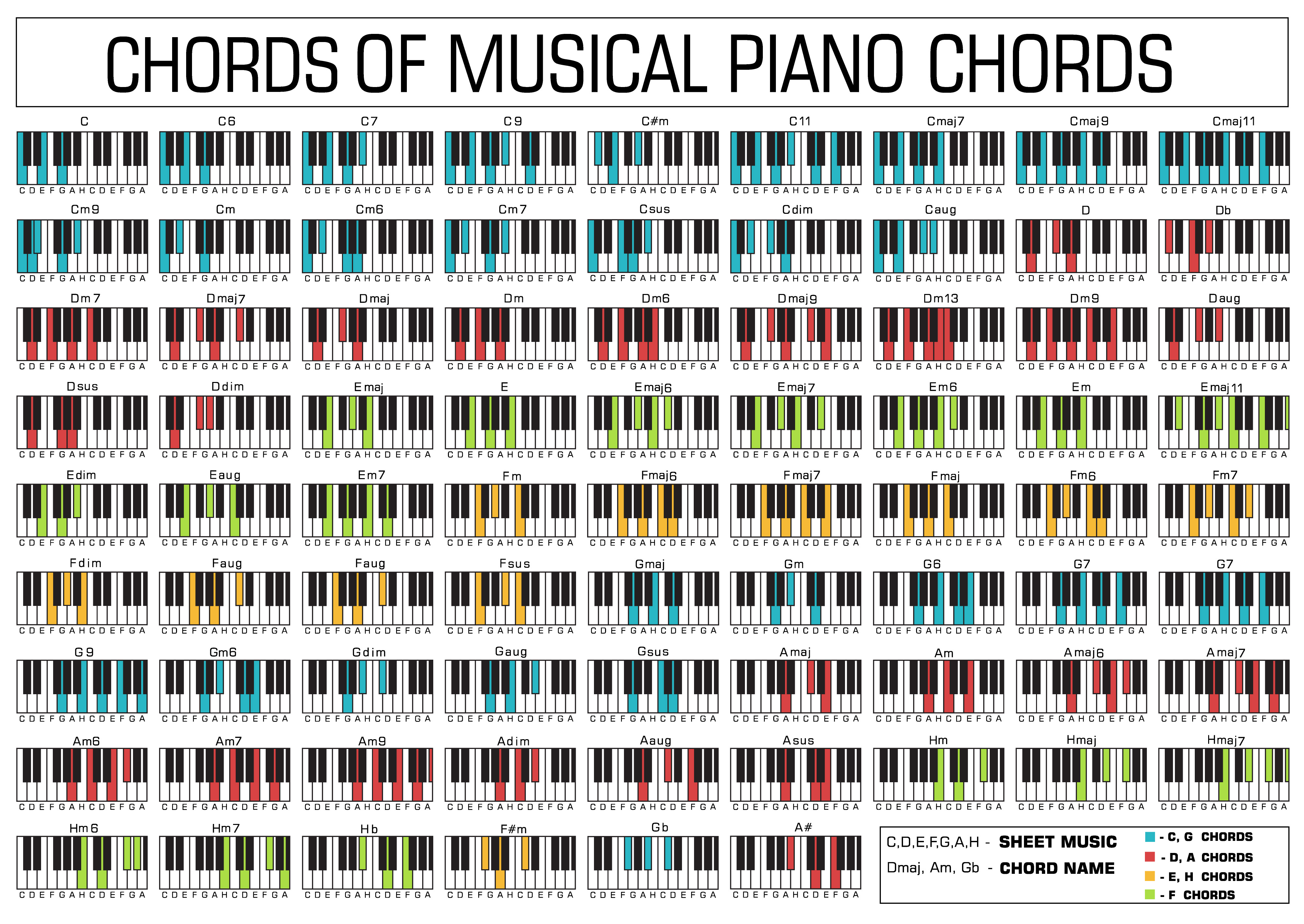


Getting Started How To Learn Piano Chords For Beginners
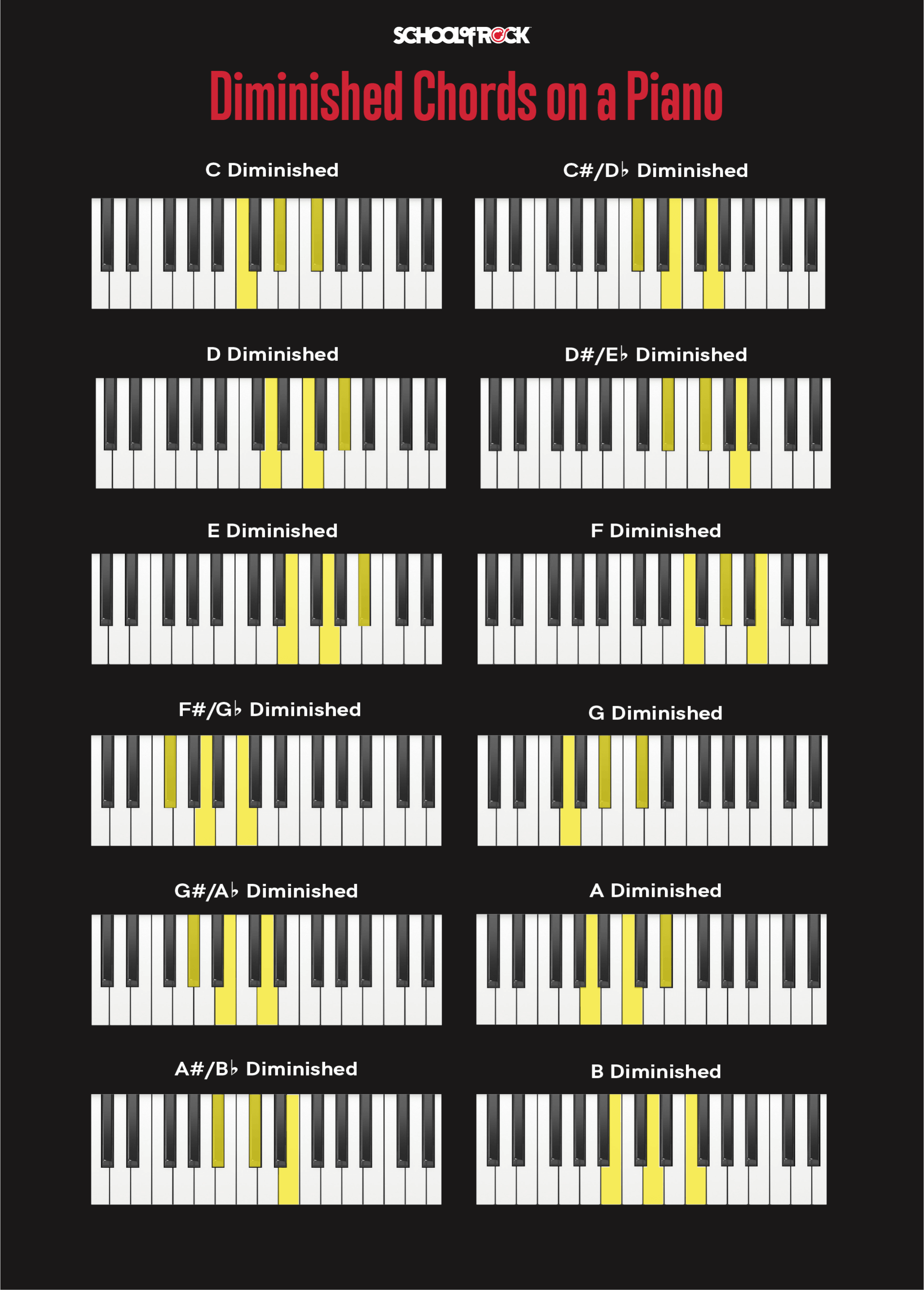


Piano Chords For Beginners School Of Rock



Basicmusictheory Com E Major Scale



E Piano Chord E Major Charts Sounds And Intervals



The Key Of E Major E Major Scale Key Signature Piano Chords And Common Chord Progressions Youtube



Basicmusictheory Com E Major Chords


The Minor Scales And Chords Portland Piano Lab



Chord Sequence Playing Charts Oldtimey Bluegrass For 400 Session Songs Tunes Description From Traditionalmusic Co Uk I S Piano Chords Chart Piano Piano Chart


1


E Major Wikipedia



Understanding Major And Minor Chords Learn The Difference


Piano E7 Chord



Chords In The Key Of E Understanding This Cool Guitar Key



Basicmusictheory Com E Blues Scale



E Major Scale Piano Tutorial Right Left Hand Fingering Chords On The Scale Free Chord Chart Youtube



List Of Piano Notes Keyboard Of View Of Major And Minor Chords Piano Chords Piano Lessons Jazz Piano


The E Major Scale


Major And Minor Primary Chords On Piano In All Keys I Iv V Chords



Basicmusictheory Com E Major Chords


G Minor Chord How To Play A Gm Chord On Piano



What Is A Sus Chord Piano Muzic Tribe



Great Reference To Determine Which Notes Are In Different Chords For Each Key Chords By Key Piano Chords In Th Piano Chords Music Theory Guitar Guitar Chords


Playing Slash Chords On The Piano



The Following Piano Key Chord Chart Shows All The Triads In F Minor As Well As Four Note Extended Chords Descript Piano Chords Piano Chords Chart Piano Scales
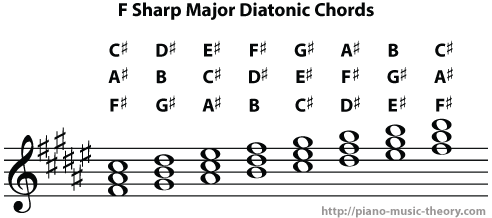


Diatonic Chords Of F Sharp Major Scale Piano Music Theory



E Major Piano Chord Diagram And Fingerings For E E G E B
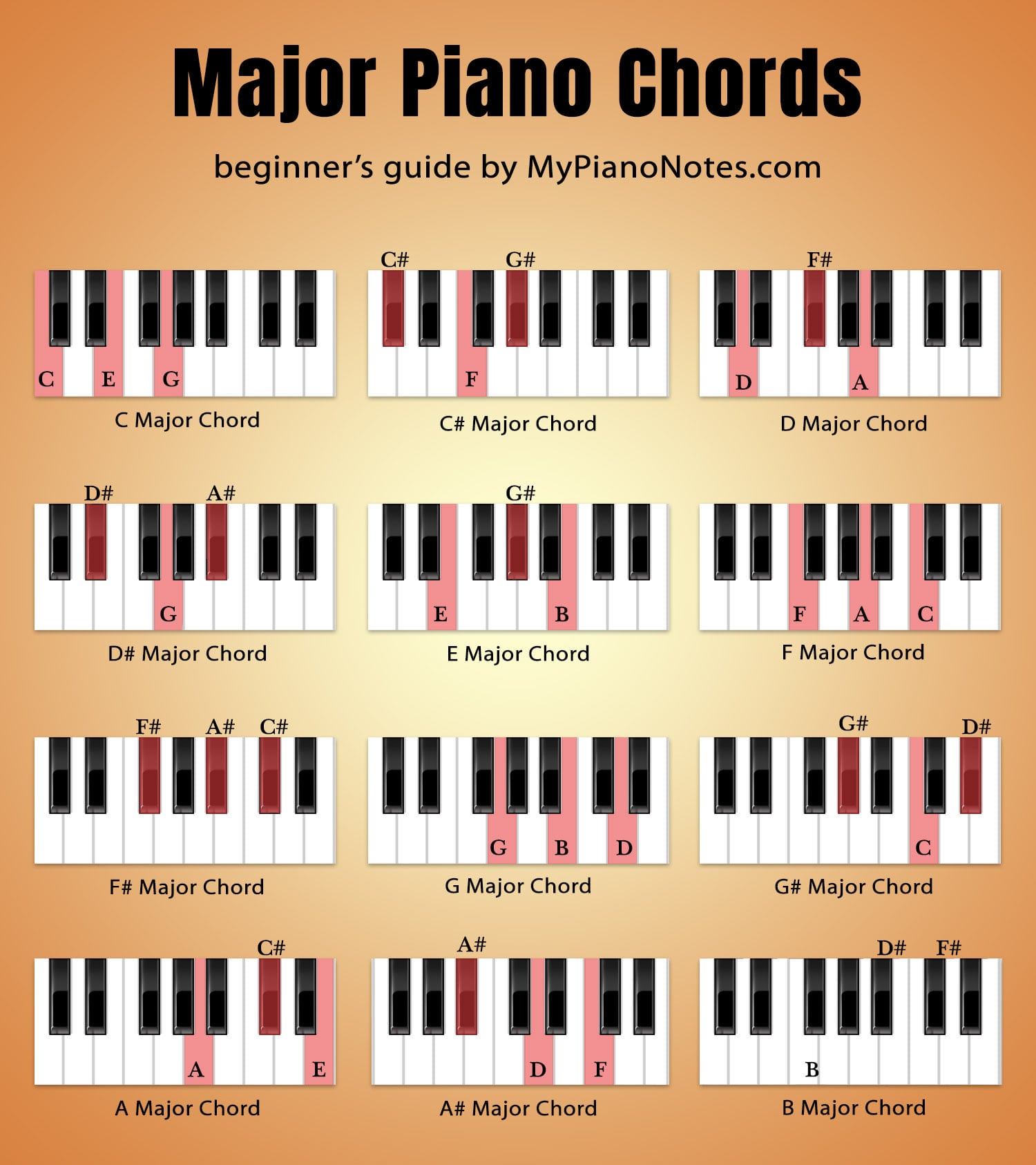


Piano Chords Ultimate Guide For Beginners
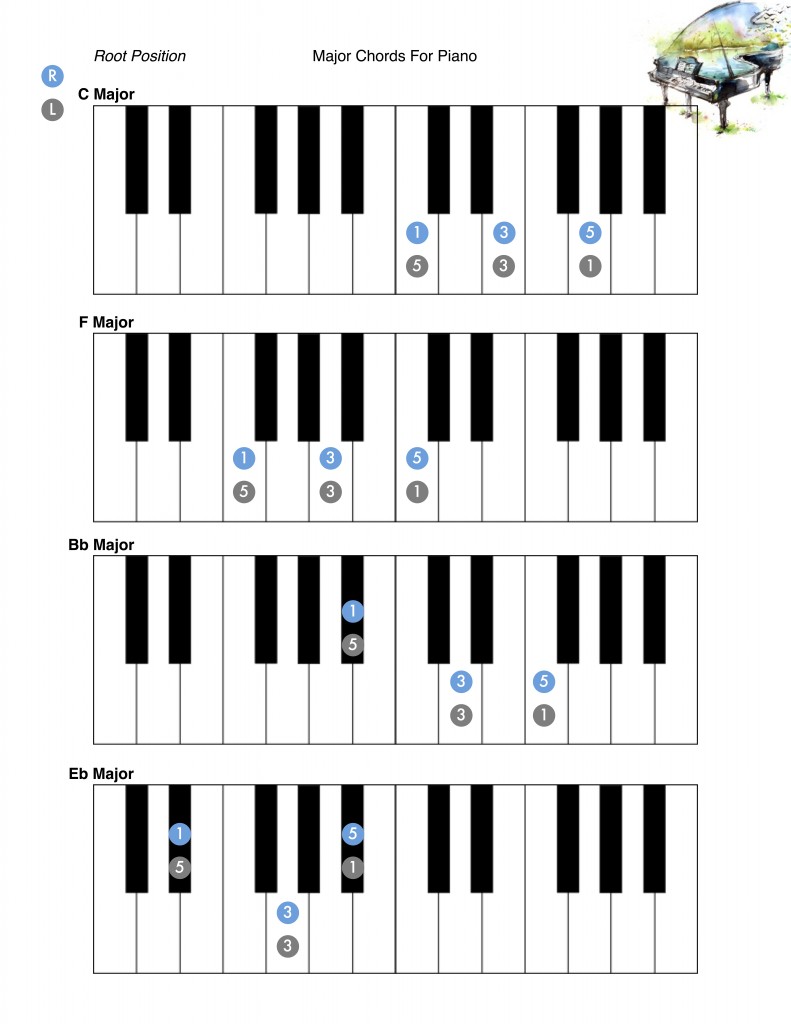


Piano Root Position Major Chords



Basicmusictheory Com E Sharp Major Chords



Basic Piano Chords For Beginners I Chords Chart Diagrams



Piano Chords Pdf Chart All Piano Keyboard Chords Roedy Black



Download Major Chords Chart In All 12 Keys Piano Music Lessons Piano Songs For Beginners Piano Chords Chart



Amazon Com Piano Chord Poster 12 X18 And Major Minor Scale Chart 8 5 X11 Combo Educational Charts For Pianists Songwriters And Producers Perfect Guide For Learning To Play Keyboard And Write Music Posters Prints



Primary Chords In The Key Of E Major Piano Lesson Youtube



How To Play The E Major Chord On Piano And Keyboard Youtube



E Major Scale Piano Music Theory



E Piano Chord Piano Chord Chart 8notes Com



12 Major Scales Free Download For Piano Chords Arpeggios And Scales


Chords In The Key Of E



E Piano Chord How To Play The E E Sharp Major Chord Piano Chord Charts Net



Basicmusictheory Com G Minor Chords



E Major Scale Piano Music Theory
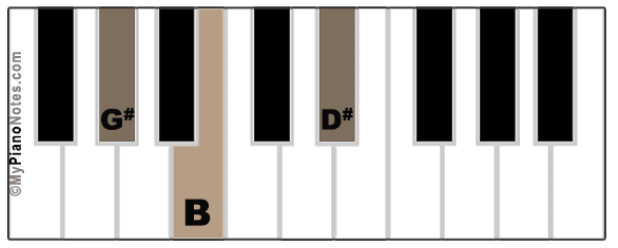


Chords In Key Of E Major All Triads Extensions Piano Examples
:max_bytes(150000):strip_icc()/A-major-chord-piano-57c7d9805f9b5829f41407b0.png)


Major Piano Treble Triads


Chords In The Key Of E


E Major Chord On Piano



Piano Chords And Pop Examples Wikibooks Open Books For An Open World



The Most Beautiful Piano Chord The Heaven Chord Piano With Jonny



Pin By Play Piano Read Music On Musical Therapist Piano Music Piano Chords Piano Chords Chart



Pin On Music


The Key Of C Sharp Major Chords



The Key Of Eb Major E Flat Major Scale Key Signature Piano Chords And Common Chord Progressions Youtube



Piano Chords Explained Music To Your Home


E Major Chord On Piano



Chords And Scale Notes Of E Major


Chords In The Key Of E



E Flat Major Scale Piano Music Theory



How To Play A C Chord On The Piano Julie Swihart



Chords By Key Piano Chords In The Keys Of A B C D E F G Flat Sharp Major Minor Music Theory Guitar Piano Chords Chart Music Chords


The E Major Scale



Piano Chords For Beginners School Of Rock


コメント
コメントを投稿